by Cyndi Janetzko
I’ve been intrigued by the TransVirginia Bike route since I first met its creator, David Landis, while riding Rockstar in the Spring of 2019. The idea of a route leaving from my front door and traveling across Virginia via forest, gravel and country roads seemed too good to be true. I knew I had to ride it, the question was when.

That May, David organized the first grand depart on the route. I didn’t have the vacation time to join for the whole thing so I settled for meeting up with the riders and leading them out from the Lincoln Memorial to the C&O before, reluctantly, turning around and heading home.
As the October grand depart neared I was still dreaming of the TransVa but also still without the needed vacation time. Fortunately, David recognized that not everyone had time (or legs) for 540 miles and created a shorter DC to Harrisonburg option. Accompanying the main route for the first 184 miles before splitting off and dropping down into Harrisonburg, it would be perfect.
On the Saturday before Columbus Day I again rode down to the Lincoln for the Grand Depart. Two days and 220 miles later I arrived in Harrisonburg hooked. I vowed that 2020 would be the year I tackled the whole thing and set my sights on May.
I spent the winter refining my set-up with lower gearing, a new frame bag, seat bag and quilt and riding as much as I could. Come May I was ready but COVID-19 had other plans. Undeterred, I looked ahead to a Fall grand depart.
It turns out I wasn’t the only one interested in the TransVa. David was receiving queries along the lines of “I’ve done a few tours, ridden the Gap/C&O and now want more. Do you think I can do it?” Sure maybe they could but at 540 miles, 43,750 feet of climbing and some very rough, remote sections it would likely be a huge leap. The demand was there though so David created the TransVa Valley route. At 520 miles and 32,725 feet of climbing it is still no small challenge but avoids the highest and most remote gravel sections.
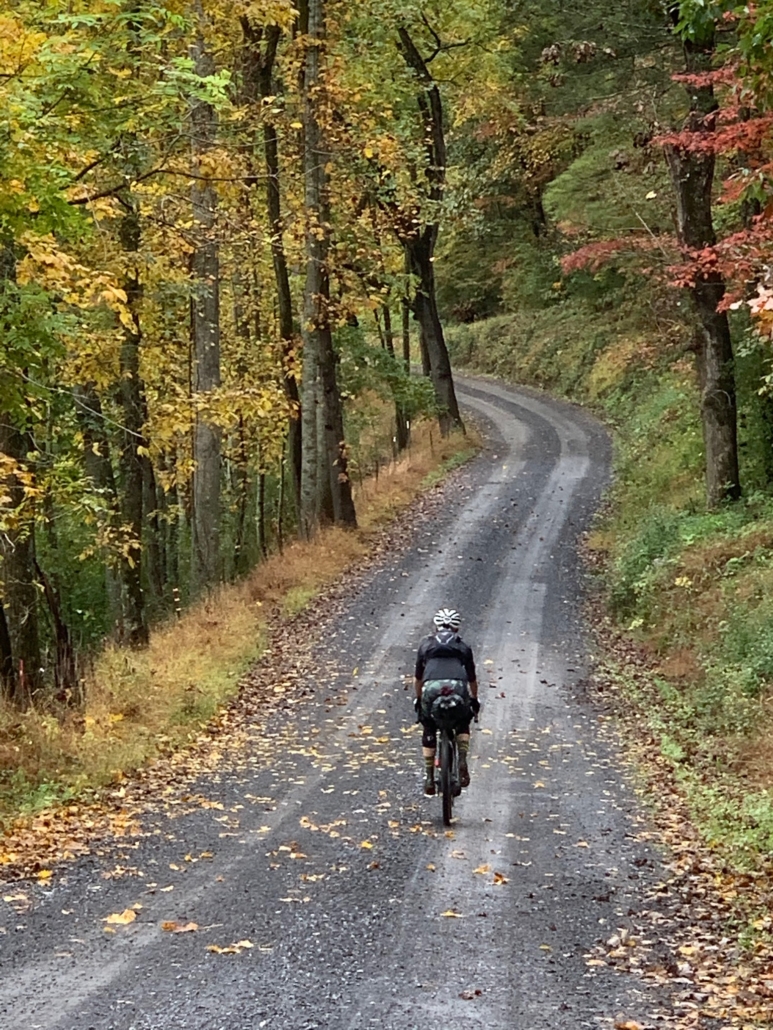
This is what makes the TransVa so special. There are now a total of three routes offering something for almost everyone. The shorter DC/Harrisonburg can serve as a great introduction to gravel bikepacking. The Valley route provides a more accessible option with frequent services and smoother surfaces. And the main route offers up its epic climbing, gravel challenge. The routes all share beautiful VA scenery and some great gravel roads and, by overlapping several times, riders can switch between the Valley and main routes as needed or wanted. I didn’t fully appreciate the genius of this until we set out …. into a hurricane.
Saturday October 10 about 30 of us converged on the Lincoln for the third Grand Depart. David and I had previously made plans to ride together so after the main contenders blasted out of town, we settled into a comfortable pace along the canal.
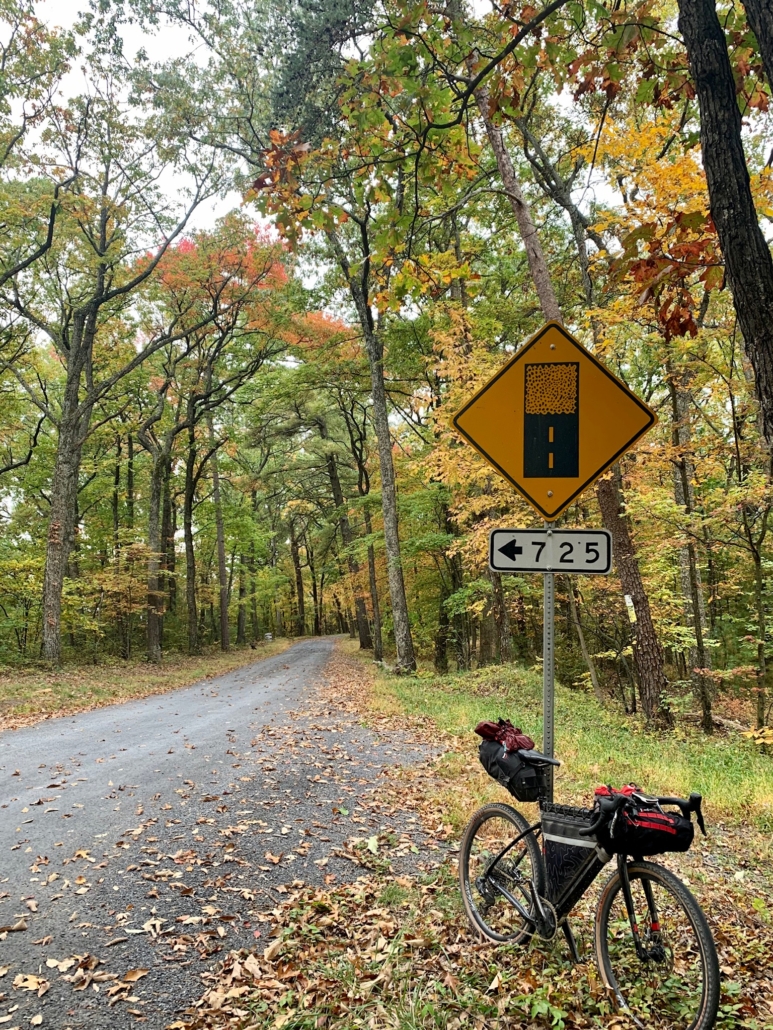
As we rolled along we discussed the rapidly approaching remnants of Hurricane Delta and an issue David was having with his knee. To make a long story short to increase our chances of getting to the finish we decided to make the conservative choice and stick to the Valley route. We also decided to make miles while the weather cooperated and set our sights on a church pavilion we knew would provide good shelter, water and power. It would be a 154 mile day.
We woke Sunday expecting rain but found none. The forecast however still looked ominous. Again we considered options. Our plan was to finish on Wednesday. Working backward we figured we could take a short day to Stokesville Campground, where showers and a pavilion would provide refuge from the worst of the weather, and then go long the next three days connecting back up to the main route.
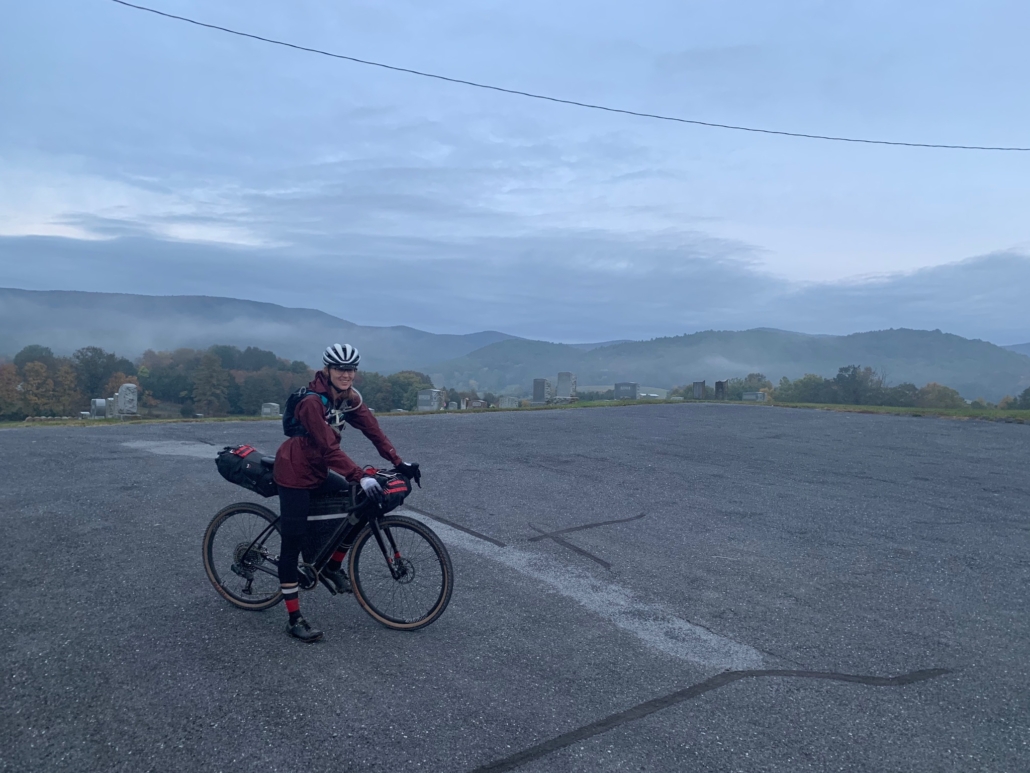
I’d previously ridden the main route into Harrisonburg so the Valley route from Van Buren Furnace was new. And it was lovely. Rolling through the Shenandoah Valley as the leaves were changing was spectacular. We were in for a special treat just outside of Harrisburg. We rolled through just as the large local Mennonite church was just getting out. We stopped to marvel at the 100+ horses and buggies pulling out of the church and dispersing into the countryside.
The rain started in earnest and it was time to move. After a quick stop at the Stokesville market for provisions, we arrived at the campground damp but not soaked. Thirty minutes later the sky opened up and it poured until 5am the following morning.
We set off in a light drizzle with the goal of covering 105 miles and getting back to the main route on Potts Mountain. Somewhere after West Augusta the rain subsided but a new challenge emerged – David was having an issue with his front wheel. Fiddling with the brake caliper, thru-axle and wheel failed to provide a solution. So we just kept riding on through Douthat, Clifton Forge and up Rich Path Road. When the two routes converged again we headed back to the main route and up Potts Mountain.

We climbed into the clouds. Mid-way up the mountain darkness set in. Visibility dropped to a few feet and it took all my concentration to maintain traction on the slippery rocks and avoid the large mud puddles. Finally, at about mile 110, we arrived at the Hanging Rock parking area where we bivvied under the roof over the trail sign trying to avoid the worst of the, by then, blowing rain.
The morning of day four I awoke in the darkness to the sound of David’s mattress deflating. My first thought was “how did he puncture that” but then I realized it was just time to get up. Another band of rain was coming and David wanted to get over the mountain before it hit. Quickly packing up we resumed the climbing and mud puddle dodging in the heavy fog of the night before. But we did avoid the rain.
The descent off the mountain started rough … one of the descents where the down is as slow as the up. But then we were rewarded by the spring and the smooth, slightly downhill gravel of Trout Run Road beneath the changing leaves. I savored it as climbing to Mountain Lake lay ahead.
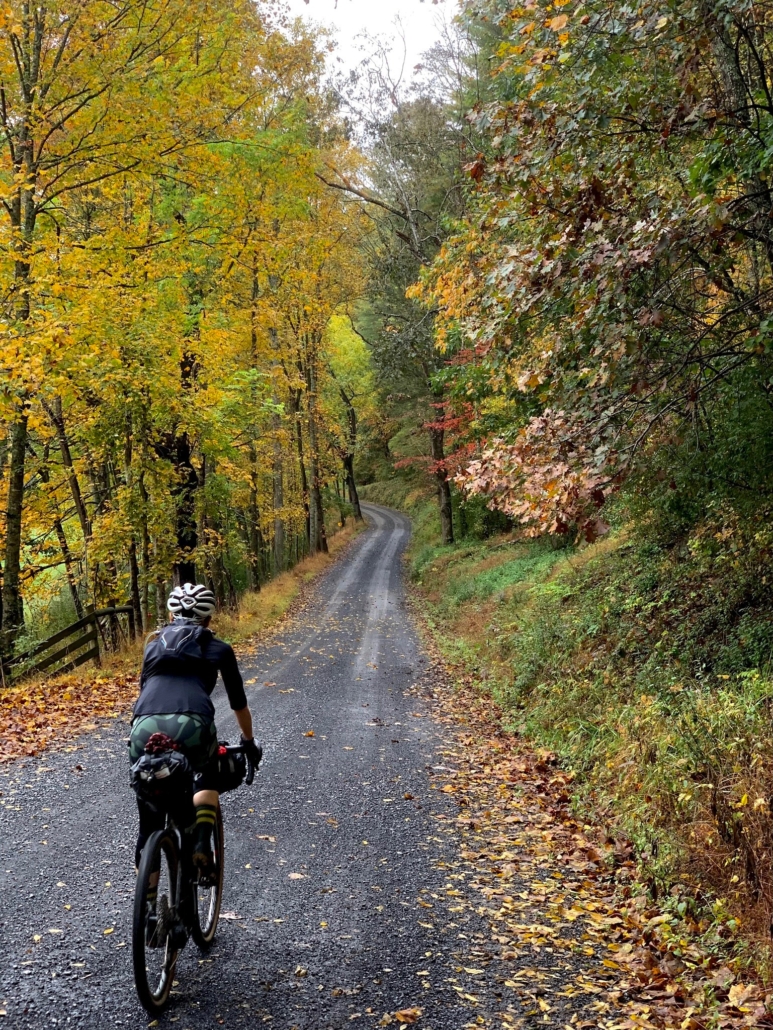
And what a climb it was — nearly 7 miles up a lovely gravel road and then along the ridge. Arriving at Mountain Lake we stopped at the lodge to layer up for the 2,000 foot plunge back to the valley. At J&J Grocery we stopped for lunch and took advantage of the sunshine to dry all the wet gear we had hastily packed that morning. Two grilled cheeses, fries, cookies, a chocolate milk, coffee and $8 dollars later I was full and the gear dry. Just one more climb over to Pulaski to go for the day.
The climb to Pulaski is another tough one with pitches over 12% on rocky, ledgey gravel. In fact, since we had skipped German River Road and the climb up Flagpole, I found it one of the toughest of the route. Unfortunately, it wasn’t just me that the climb almost did in and rolling into Pulaski we heard a new sound from David’s bike – that ominous, energy sapping sound of brake/rotor rub.
We stopped by the train station for more diagnostics. Swapped out the brake pads and rode a bit further. No improvement. Another stop for tweaking yielded no better results. Finally, it dawned on us it wasn’t the rotor, the brake or the rim. It was in fact the tire delaminating from the inside, creating a bulge and throwing the wheel out of true. David had had this happen on another tire of the same make and knew the signs. The options were few – find a new tire or find a ride home – and there are no bike shops in Pulaski. As our daylight ran out, David made the decision to end his ride. I had to decide what to do next.
Again, this is where the beauty of the TransVa really shone through. My options were to call the ride along with David or to carry on solo. I opted for the latter largely based on the fact that I had a choice between the Valley and the main routes. With no one behind me for at least two days and I wasn’t sure I wanted to tackle the more remote main route solo. The more populated and service filled Valley route meant I would never be totally stranded if something went amiss. So onward it was.
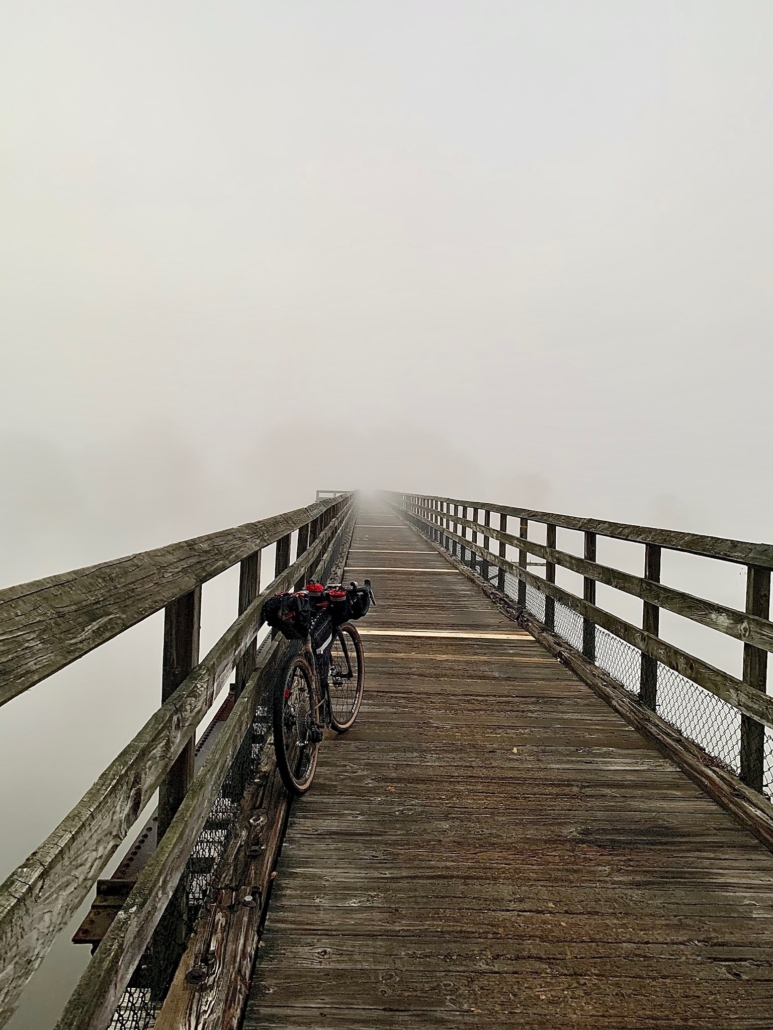
I rolled down the New River Trail in the dark to Millrace campground and found a spot to pitch the tent. After a quick dinner, I crawled in for my last night. Up again before first light I finished the NRT just as the sun broke through. From there it was an easy and scenic spin to Sugar Grove for a resupply before climbing Whitetop to the routes’ highest point at 4,500 feet. After a celebratory ice cream, it was, literally, all downhill from there. Down the Creeper Trail in evening light beneath a canopy of changing leaves and beside the river. I could think of no better ending as I arrived at the Damascus Caboose.
While I haven’t ridden many bikepacking routes I believe the TransVa is special. Special in its challenge, its remoteness, its scenery and its options. The ability to change routes mid-ride multiple times means you can ride it many different ways as needs, wants, weather, or ability dictate. It can turn an undoable ride into something doable.






